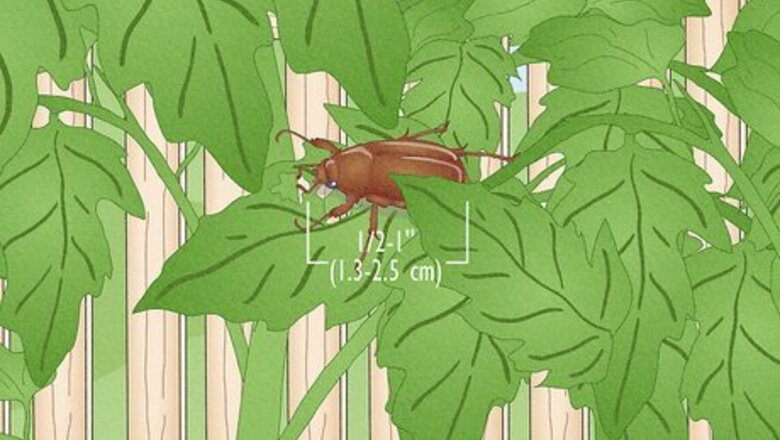
views
- June bugs are beetles that live for about 3 years. In the grub phase, they are especially damaging to your lawn and garden.
- Get rid of June bugs by repelling them with a homemade mixture of dish soap and water, or by sprinkling essential oils.
- You can also set beetle traps or target them using beneficial nematodes.
- For a soil-based solution, spread diatomaceous earth or a curative insecticide on your lawn.
June Bug Basics

June bugs are ⁄2 to 1 in (1.3 to 2.5 cm) beetles. The term “June bug” is a general term used to describe over 100 different species of beetles that become abundant during the months of May and June. The surfaces of their bodies can be green, red, or brown. The undersides of their bodies are often a shiny, metallic green or gold, and they have wings that are protected beneath their hard shell.
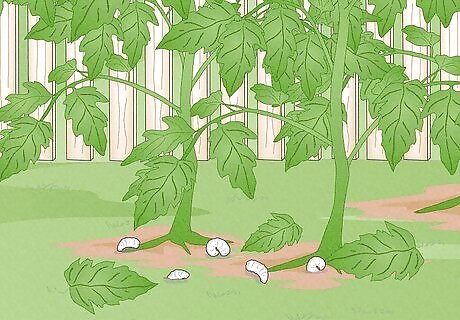
They spend most of their life as a larva or a “grub”. As grubs, they are white c-curved worms with three legs. If you look closely, you’ll see they move around by crawling on their backs rather than using their small legs. This life stage is when they do the most damage to your lawn and garden. Grubs will live deep in the soil and eat plant roots, grass, and grains.
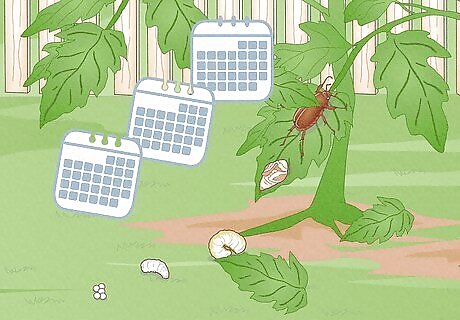
The life cycle of a June bug allows them to live up to 3 years. In late May and early June is when you’ll notice adult male and female June bugs emerging from the soil to mate. The females will then burrow deep into the soil to lay their eggs. When June bug eggs hatch, the white grubs will feed on nearby plant roots. For the next two years, the grubs will grow, eat more, and become more destructive. During the late summer/fall of their third year, they will begin to “pupate” in the soil, or begin the process of transforming from a larva to a mature beetle. In the spring the cycle begins again as they emerge as adults to find a mate.
Ways to Eradicate June Bugs
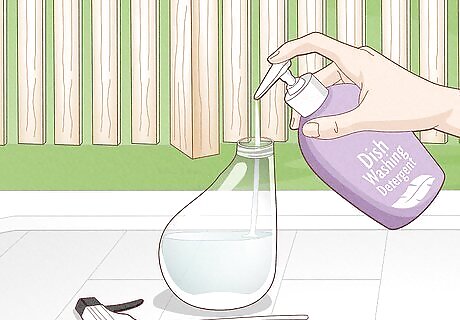
Make a June bug repellent spray with dish soap and water. If you’re looking for an easy application, this method is for you! Fill a spray bottle halfway with water and add 4 tablespoons (57 grams) of dish soap. Then simply spray whenever you see the June bugs. This is a natural repellent that is completely safe for humans and animals, so no need to worry about your children or pets. It is also safe to use indoors as well as outdoors.
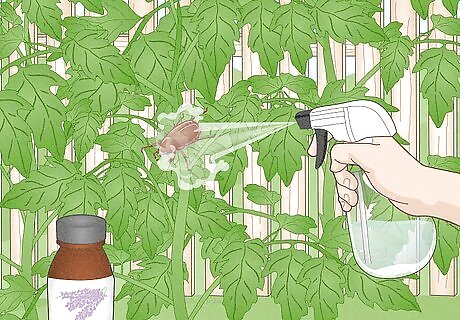
Use essential oils to deter June bugs. A quick and simple way to get rid of June bugs is to use smells they don’t like. Mix 10-20 drops of essential oils in a spray bottle full of water or vinegar to make a potent bug repellent. Shake well as oil and water tend to separate, then spray infested areas outdoors. After spraying the essential oils outside, keep pets away from the sprayed area for a couple of days, as some oils can be toxic to animals. Choose one or use a combination of these scents to make your spray Eucalyptus Lemon grass Tea tree Geranium Sage Mint Lavender Citronella
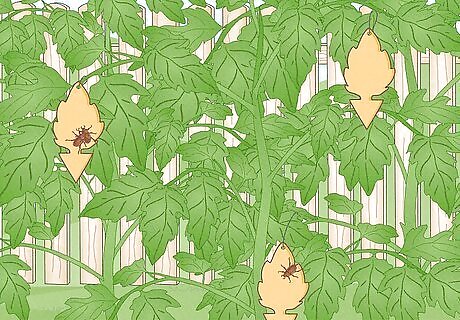
Utilize ready-made beetle traps or make your own at home. These traps are great for both indoor and outdoor June bug treatment. There are usually two types of beetle traps – the first uses sex pheromones and the second uses a floral scent to lure the bugs. In general, pheromone baited traps are more efficient and will catch more June bugs. If you’re looking for a way to make your own beetle traps, you can easily make one by combining 1 packet of yeast, 1 cup (240 mL) of molasses, and 2 cups (470 mL) of water, or by simply filling a jar with vegetable oil. Place your homemade bug trap by your June bug-infested spot. The bugs will be attracted to the jar and once they fall in, will become stuck. Check on the trap every 2-3 days and add new bait.
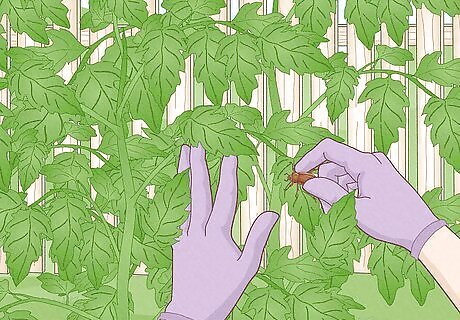
Put on a pair of gloves and hand pick them out of your plants. Believe it or not, one of the best ways to get rid of June bugs is actually to collect them by hand. Once you’ve picked them up, place them in a bucket filled with soapy water to drown them before disposing of them. Don’t worry about June bugs being hard to catch! They’re very clumsy, which is why you’ll sometimes hear them hitting your windows. So, grab a pair of gloves, a bucket, and start picking!
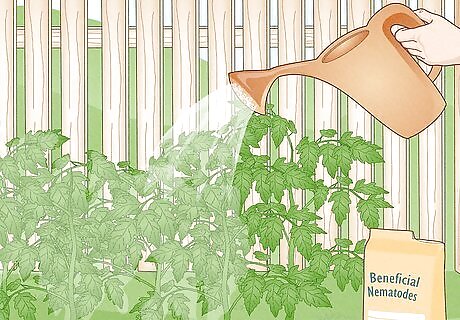
Try beneficial nematodes for a non-toxic way to treat June bug grubs. Beneficial nematodes are live microscopic worms that kill their host by releasing bacteria into it. They’re a natural form of pest control that is safe for the environment, humans and animals. Just follow the specific instructions on the back of the bag to mix the nematodes in water and use a sprayer, hose end sprayer or watering can to drench infested garden areas. You only need about 20,000 beneficial nematodes to treat 1 square foot (0.093 m), however they are so small that they’re usually packaged in bags of 5 million (enough to treat 1,500 square feet (140 m)). It’s best to buy beneficial nematodes from your local home and garden store. Since they’re alive, shipping can stress them out and cause them to die.
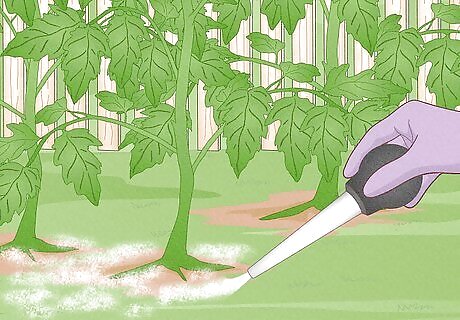
Spread diatomaceous earth to get rid of adult June bugs. Diatomaceous earth is fossilized remains of algae, and when it’s spread on the ground it has small, sharp edges which are deadly to insects, but harmless to humans. Scatter the dry diatomaceous earth in outdoor areas where you’ve spotted the June bugs. Spray the wet mixture with a hose sprayer. For areas that can’t be reached by dry diatomaceous earth, mix at a ratio of 4 tablespoons (57 grams) of diatomaceous earth and 1 gallon (3.8 L) of water. HARRIS’ diatomaceous earth is a great choice as it’s food grade, which is it’s most safe and gentle form.
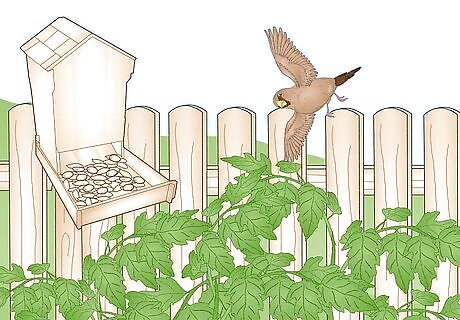
Attract June bug predators with bird feeders and moist shelters. A bird feeder or a bird bath will attract birds which will eat both the June bugs and grubs. Additionally, creating messy, areas with logs, vegetation or leaves will attract June bug predators like frogs and toads. June bugs are food for many animals and you can easily reduce the number of June bugs in your garden and lawn by creating an environment where June bug predators can thrive.
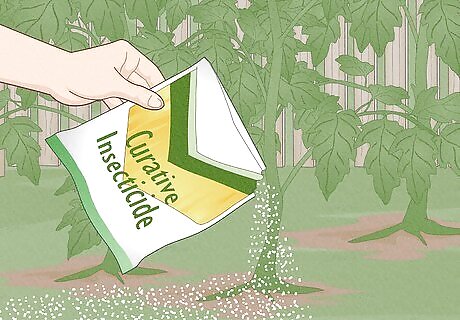
Apply a curative insecticide in late summer/early fall. If you’ve already begun to see the tell tale signs of June bug grub damage, it’s not too late! Use curative insecticides as an easy way to get rid of large numbers of grubs. Apply during the evening when they come to the surface to avoid the insecticide not reaching them deep in the soil. However, be aware that this can lead to dead, smelly grubs showing up on the surface of your lawn. Simply don a pair of gloves and dispose of the dead grubs in a trash bag. Before applying insecticides, mow your lawn to shake out wildlife. You want to avoid spraying bees or other pollinators that are essential to your garden’s health. It’s also important to ensure there are no bunny holes, frogs or other small animals in your grass before using insecticides. If you’re worried about your garden or lawn animals’ health, St. Gabriel Organic Milky Spore insecticide is safe for pets, plants, and humans. All you have to do is sprinkle the powder insecticide over your lawn. The grubs will eat the insecticide, die, decompose, and spread more of the insecticide. This leads to an almost 10-year insecticide effectiveness.
Signs You Have June Bugs
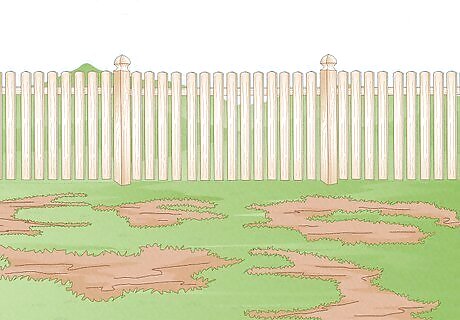
You have dead patches in your grass. June bug grubs feed on roots, so the early signs of grub damage may look like drought stress.You may also notice yellow and wilting plants, or even stunted plant growth.
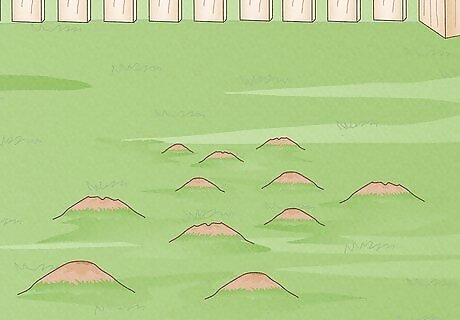
There are small mounds of dirt in your lawn. Young grubs tunnel about 4 inches (10 cm) into the soil, and when they come up to the surface at night to munch on the grass, they push out soil leaving mounds on the surface. The openings to these tunnels are about the width of your finger, not to be confused with worm castings which are only about the diameter of a pencil.
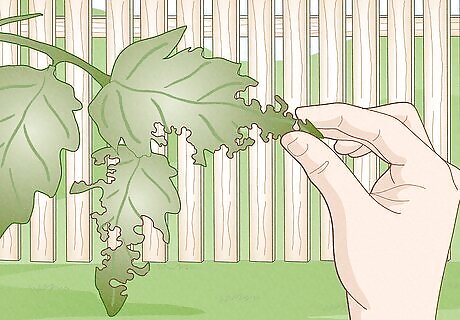
There are nibbles in your plants. Adult June bugs will eat decaying foliage, flowers, and leaves. Although adult June bugs do much less damage than grubs, they will eventually mate and leave destructive grubs in your garden.

Beetles have been hitting your window or swarming your outdoor lights. June bugs are nocturnal and attracted to bright lights. During the early evenings you might hear them running into your window as they’re drawn to your indoor lights. You might also find them flying around your outdoor porch lights.
What attracts June bugs?
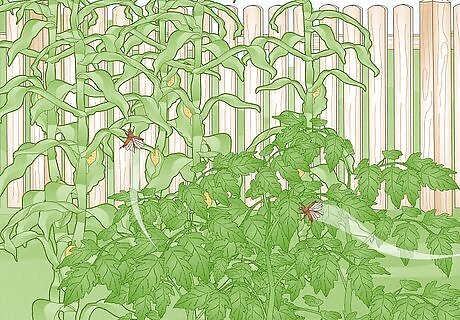
June bugs love a nice garden full of plants, fruits, and vegetables. Like most bugs, June bugs will flock to places with good food and shelter. You might be accidentally luring June bugs to your house if you have these in your garden: Apples Cherries Peaches Corn Hibiscus Roses Raspberries Grape Vines Beans
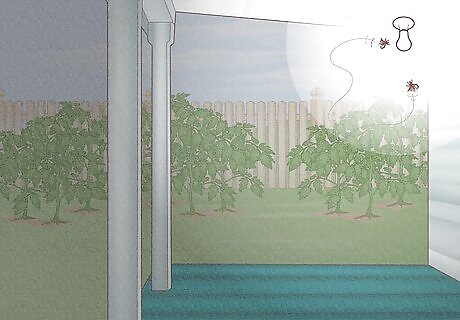
Bright outdoor lights will lure June bugs to your yard. June bugs are known to love light so much, they die from over exposure. This is why you’ll sometimes find dead June bugs next to your porch lights or lamps.
June Bug Prevention

Maintain a healthy lawn. June bugs lay their eggs in short, grassy areas so keeping your grass at least 3 inches (7.6 cm) tall during the summer months will help prevent June bugs from coming back. Remove grass trimmings, fallen leaves, and dead vegetation from your lawn as well to discourage June bugs from laying eggs in your lawn.

Change your outdoor light. June bugs are attracted to bright lights during the evening, so changing your outdoor lights from a bright, white light to a warmer, yellow light can help deter June bugs. LED lights are also a great option as they don’t emit as much UV light which can attract the June bugs.
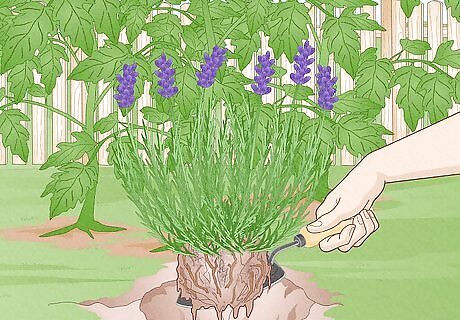
Add plants like lavender and rosemary that naturally deter June bugs. Adding plants like rosemary or lavender to your garden can help to keep June bugs away because they dislike the strong smell. Plant these where you’ve seen June bugs to keep them away next season!
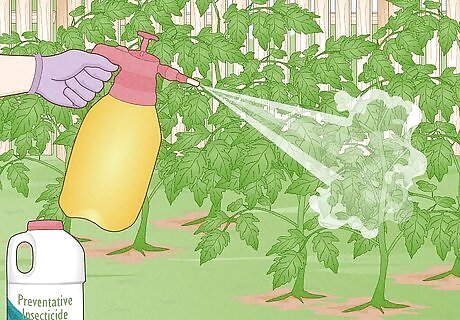
Use a preventative insecticide. To avoid June bugs next year, spray a preventative insecticide in June or July. After your first season with June bugs, it is a good idea to use a preventative insecticide for the next year or two to allow your lawn to build a resistance to grubs. The Merit Granular Systemic Insecticide is a great long-lasting, low-toxicity insecticide that can be applied scattering over your lawn.














Comments
0 comment